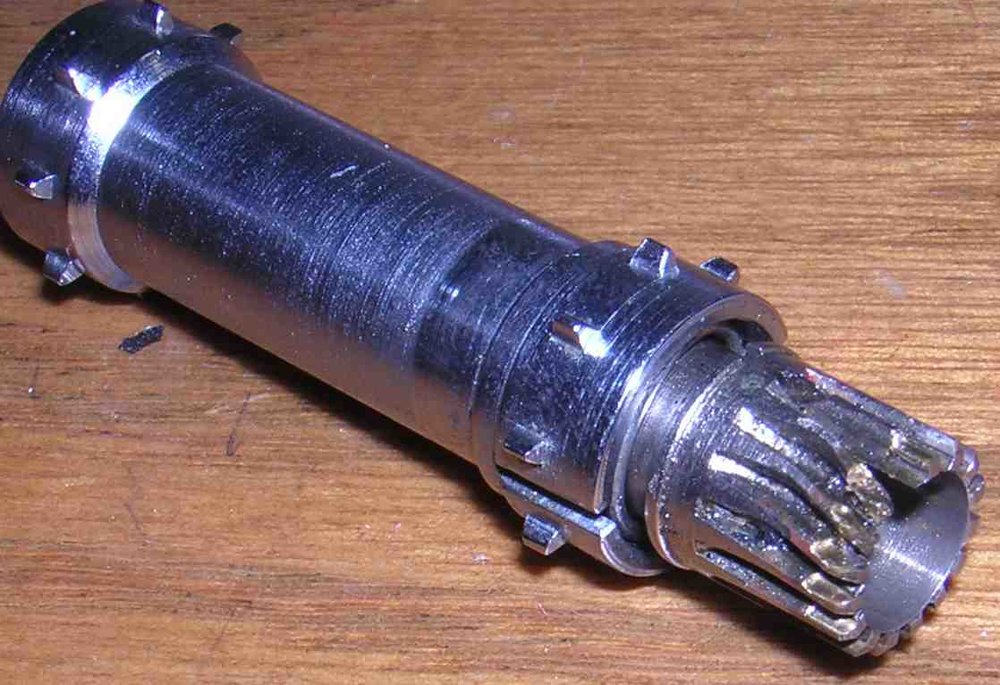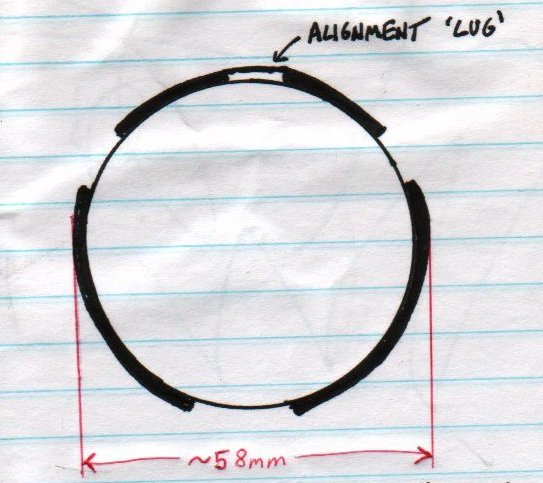
Henri Titchen
-
Posts
131 -
Joined
-
Last visited
Posts posted by Henri Titchen
-
-
Hi,
This is usually a job for a skilled technician. There are two aspects to test a lens, physical issues and optical issues.Simple tests however can be carried out photographing test charts.
There are often use three pieces of equipment for optical testing of cine lenses.
MTF tester
Here is an example of an MTF tester used for testing PL mount lenses.
http://www.keystone-intl.co.jp/contents/carlzeiss/tester/MTF_Tester_K9.pdf
Lens Projector
Here is an example of a lens projector used for testing PL mount lenses.
http://www.chrosziel.com/data/chrosziel/produkte/documents/Projektion_E.pdf
Collimator
http://www.chrosziel.com/data/chrosziel/produkte/documents/Kollimation_E.pdf
Cheers.
how to test a lens if it is good or bad?
-
Dominic, yes you are correct, it is a definite risk.
Some other risks worth considering are poor handling of the packages. Once I received film that had badly dented cans with some minor damage to stock inside. Posting/shipping in the heat of summer might result in the package sitting in the sun for hours....it can't be good for the film.
H
Doesn't mean it's safe to do so. You were lucky. Perhaps you park without paying - and you often get away with it. Doesn't mean you'll never get booked. It's a risk that you'll get your images ruined. -
Hi Chris,
Your idea of using an asian lab is interesting.
Some assorted points that "may" help with decision making.
1) Australian labs seem open to bargaining especially for students
2) Due to the current difference between the Aussie and NZ $ then Park Road Post and other NZ labs mentioned by Dominic Case may be a good choice.
3) I have posted low ASA stocks internationally with no apparent x-ray fogging. Make sure you don't send unprocessed stock via "surface mail" it may take 3mths to arrive.
4) I tried to use an asian lab but found that language was an issue.
5) The Aussie $ is very strong at the moment, (especially against the Euro). Might be worth looking at European labs.
If you find a lab in Asia that you are happy with please let us know!!
For short ends I would try the NSW shop called "The Stock Shop". They have a lot of 35mm....not sure about 16mm.
H.
-
Abebooks has a single copy however the price is US$305!
www.abebooks.com
H.
-
Sorry, NEGATIVES you said.
As far as I know, the sound negative is also made on a special type of colour stock, specifically to avoid the need for B&W processing.
The only Kodak sound negative films I have heard of are 2374 and 2378:
http://motion.kodak.com/AU/en/motion/Produ...uction/2374.htm
http://motion.kodak.com/AU/en/motion/Produ...uction/2378.htm
These are both B&W process. Using D-97 developer. This means the lab processing sound negs needs to retain a B&W developing machine.
H.
-
From my understanding most of the larger labs retain B&W processing machines as they are required extensively for developing optical soundtrack negatives.
Can you actually get real Black and White prints made at all now? Considering the complexity of the chemical processing required I can't imagine anybody not having converted all their existing monochrome chains permanently to colour by now.Or can you get chromagenic B&W print stock that will work in a colour processor?
-
Kristian,
Camera and results look great. The water splash footage is nice.
Which sprockets did you have to remove?
Did you find it easy to get pin-out/wiring information for this camera?
Thanks from,
H.
-
Yes, these cameras IMHO when properly maintained with good lenses and a skilled operator are suitable for "big screen".
I am currently seeking advice.Can a full feature film be shot on an Arriflex IIC? Will the look of the film be good enough for the big screen?
Thank You!
Diego
-
See attached photo from an eyemo I repaired.
I don't know the cause. It shows how these gears can be damaged.
I guess it was some sort of jam that damaged the gear.
Yeah, I've stripped the gears in a Krasnogorsk 3 while running polyester based film through it. The gear that stripped was not metal though, I think it was made of fiberglass or some similar material. All the gears in the Eyemo are brass or steel, as far as I can tell, when I took one apart. I've shot over 10,000 ft of polyester based films through it and never had a problem, even with jams occurring, the camera just usually stops. I think the gears and the associated mechanisms seem strong enough to be able to handle it. -
Remember that a polyester (estar) film jam in a camera may strip gears. Acetate/tri-acetate tears more easily and is less likely to damage a camera.
The gear at the base of the drive sprocket/s in my eyemo is brass. (Many of the other gears appear to be steel.)
Though not as thin as the above mentioned ^ film, there are several different lab films that are available in a thinner polyester base. I've experimented with several different ones, wound on daylight spools and used in an Eyemo. Some of them can fit about 200ft on a regular daylight spool. I don't know if those types of films would be suitable for your intended application due there specific characteristics, as they are intended for lab use rather then as camera negative. -
Zeiss Factory Tour.
http://www.fdtimes.com/articles/zeiss/ZEIS...ens_fdtimes.pdf
Cooke Factory Tour
http://www.fdtimes.com/articles/cooke/Cook...6_Web150dpi.pdf
Angénieux Tour
http://www.fdtimes.com/articles/angenieux/...tion-200dpi.pdf
Cheers,
H.
-
Double Eagle is another commonly used brand of carbons, they are used in lamp houses of cinema projectors.
http://www.jackroeusa.com/Cinema-carbons.html
Cheers,
H.
-
I am a big fan of film however this is one application in which digital SLRs IMHO generally win against 35mm film.
1) Resolution of the new digital SLRs is incredible, as are ISO ratings! E.g. Variable ISO from 100 to 102,400. (Fewer problems in dim light).
2) No registration issues, image is as steady as the support. No need for pin registered film SLR or modified motion picture camera.
3) No problems with ageing filmstock in the magazine on long takes or in warm conditions
4) Digital SLRs are small and easy to mount.
5) Digital SLRs are cheap compared to many of the alternatives.
From my understanding not much stop motion uses film any more. Digital SLRs are more commonly used. This is a similar application to timelapse.
Take a look at the wonderful digital SLR results in the following BBC clip (not posted by me).
http://www.youtube.com/watch?v=aCyoqaM_4sM
Cheers,
H.
PS: I have a single frame capable eyemo :-)
Would like to ask if anyone has experience comparing the quality of a traditionally done 35mm motion picture timelapse with the timelapse you can now do with many DSLR cameras.The stuff I have seen online that was done with DSLR cameras looks a bit jumpy, flickery, and not as polished.
Anyone with experience with both who would like to share, I'd really appreciate it.
Thanks,
-Tim
-
Glenn,
Could you please post some photos.
If they are difficult to upload you can put them on Flickr of Photobucket etc.
I'd like to copy your success.
Thanks From,
H.
Of course I know Vince. Call the sales dept and ask for Rik, get a quote for DI scanning. The best they could do is $0.50 per frame. Which would have cost about $25,000.This is not for the feint of heart.
You need to be a Matlab, Labview, and C/C++ guru.
I built my own hardware and wrote software to scan it myself at 78 lp/mm for about $1400USD.
here's what you need
Nikon scanner
Motor with an encoder
2 or 4 gang 35mm film gang
Labview
Nikon SDK
MS compiler
Write code that interfaces to scanner, calibrates, scans image. It will take about 3 weeks at 24x7 to scan 50,000 frames of VV with quality control.
For processing full 16-bit uncompressed images, color correction, image stabilization, etc.
Matlab
When the cash flow is more positive, I intend to buy two or three VV cameras and I'll modify them for a Leica mount for my next film, a feature.
-
Here is a 65mm Model SC Panavision for sale. Comes with two lenses and magazines.
According to the info on the website it was used on, Lawrence of Arabia.
-
WANTED: Lenses for Russian 70mm cameras.
Please send me a PM if you can help.
Thanks from,
H.
-
Hi,
Anyone know what type of lens mount this 70mm Kinor uses?
http://www.in70mm.com/news/2009/berlinale/images/cam_1.jpg
Thanks From,
H
-
WANTED: Lenses for Russian 70mm "movie" cameras.
Please send me a PM if you have any for sale or have any leads.
Thanks.
-
-
FREE: 16mm animation camera - Sydney, Australia. Pickup only.
Has a magazine and I think a few Nikon lenses that have been specially modified. Missing the control electronics. Very solidly made.
Please send me a PM if you are interested.
PICKUP ONLY. Sorry I don't have time to pack the camera and chase couriers etc.
Thanks,
H.
-
The Kodak manuals on cine film processing are located at:
http://motion.kodak.com/US/en/motion/Suppo...nline/index.htm
The manual related to Remjet removal is:
http://motion.kodak.com/motion/uploadedFil..._h242_h2402.pdf
These all apply to lab use. Amateurs use different methods. There are some useful tips on APUG regarding remjet removal:
http://www.apug.org/forums/forum216/37994-...torial-use.html
http://www.apug.org/forums/archive/index.php/t-55051.html
Henry.
-
Here is a link to info on other lenses with a yellow tint issue. I can't vouch for the method of "clearing" the tint.
http://photo.net/pentax-camera-forum/00RYOO
Henry.
-
PSR anyone?
in 35mm
There is a nice Panavision camera at:
http://www.martinhill.com/The%20Advanced%20Collector.htm
Henry.
-
Hi,
Hope someone can help.
I am looking for any unexposed Soviet/Eastern block 70mm motion picture film. For example 70mm negative made by ORWO.
Interested in B&W or Colour. Even very old film OK, (as long as it doesn't smell of vinegar!)
Please send me a private mail if you can help.
Thanks From,
Henry.
PS: I'm also interested in clear 65mm or 70mm acetate leader.




Making KODAK Film - new interesting book
in Film Stocks & Processing
Posted
A new book on the manufacture of film has been released. Looks very interesting.
http://www.makingkodakfilm.com/
Cheers,
H.